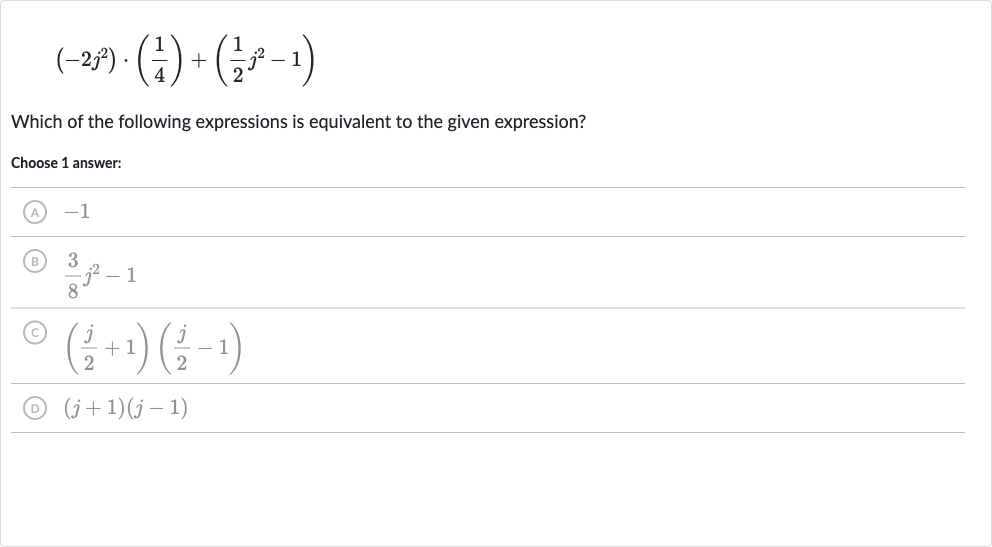Full solution
Q. Which of the following expressions is equivalent to the given expression?Choose answer:(A) (B) (C) (D)
- Simplify Multiplication: First, let's simplify the expression by handling the multiplication and addition separately.
- Handle Multiplication: We start with the multiplication part: . Since is equal to (because is the imaginary unit), we can replace with ..
- Simplify Addition: Now let's simplify the addition part: . Again, replacing with , we get:.
- Combine Simplified Parts: Combine the two parts we've simplified: . .
- Final Result: The simplified expression is , which matches option .
More problems from Multiplication with rational exponents
QuestionGet tutor help
QuestionGet tutor help
QuestionGet tutor help
QuestionGet tutor help
QuestionGet tutor help

